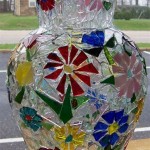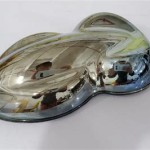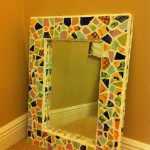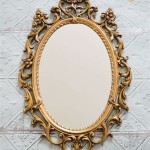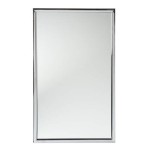How To Transport A Mirror in a Car
Transporting a mirror, especially a large or antique one, can be a daunting task. Damage during transit can be costly and heartbreaking. However, with proper planning and execution, one can safely move mirrors of varying sizes and shapes in a vehicle. This article provides a comprehensive guide to ensure the mirror arrives at its destination unscathed.
1. Gathering the Necessary Materials
Before beginning the transport process, assembling the right materials is crucial. These materials provide essential protection and securement for the mirror during the journey. Having everything readily available streamlines the packing process and minimizes the risk of last-minute scrambling, which could potentially lead to improper packing.
Essential materials include:
- Thick blankets or moving pads: These provide cushioning against vibrations and bumps.
- Cardboard sheets: Ideally, two pieces of cardboard, larger than the mirror itself, should be used. These offer rigid protection against impacts.
- Packing tape: This secures the cardboard and padding to the mirror and keeps everything in place.
- Bubble wrap: Offers an additional layer of cushioning, especially for fragile or antique mirrors.
- Tie-down straps or rope: These are essential for securing the mirror within the vehicle to prevent shifting during transit.
- Gloves: Protect hands from sharp edges and provide a better grip.
- Measuring tape: Ensures accurate measurements for the cardboard and packing materials.
2. Preparing the Mirror for Transport
Proper preparation is the foundation of safe mirror transportation. This process involves safeguarding the mirror's delicate surface and creating a protective barrier against potential impacts.
First, clean the mirror surface with a suitable glass cleaner. This removes any dirt or debris that could scratch the surface during transit. Next, place the mirror on a clean, flat surface like a carpeted floor or a large table covered with a soft blanket. This provides a cushioned work area and minimizes the risk of accidental damage.
Position one sheet of cardboard on the flat surface. This will serve as the base layer of protection. Place the mirror carefully on top of the cardboard. Cover the mirror's surface with a layer of bubble wrap, ensuring complete coverage. This adds an extra layer of cushioning against vibrations and impacts. Place the second piece of cardboard on top of the bubble-wrapped mirror. This creates a sandwich-like structure that provides rigid protection. Securely tape all edges of the cardboard together using packing tape. This holds the cardboard and bubble wrap firmly in place, creating a secure package.
For larger mirrors, consider adding additional layers of cardboard and padding for increased protection. If transporting multiple mirrors, wrap each one individually to prevent them from rubbing against each other and causing damage.
3. Securing the Mirror in the Vehicle
Once the mirror is adequately packaged, the next crucial step is securing it within the vehicle. Proper securement prevents the mirror from shifting or moving during transit, significantly reducing the risk of damage.
Ideally, the mirror should be transported in a vehicle with a flat, level surface, such as an SUV, van, or truck bed. If transporting in a car, ensure the back seats are folded down to create a larger, more stable surface area. Line the vehicle's cargo area with blankets or moving pads to create an additional layer of cushioning. Carefully place the packaged mirror on this padded surface. Avoid placing the mirror directly on the vehicle's floor without padding.
Use tie-down straps or rope to secure the mirror package to the vehicle's anchor points. This prevents the mirror from sliding or toppling during transit. Ensure the straps are tight enough to hold the mirror firmly in place but not so tight as to damage the frame or the packaged structure. If the mirror is particularly large or heavy, consider using additional straps for extra security. For smaller mirrors, wedging them between other stable items in the vehicle can further prevent movement. Padding these items with blankets helps to avoid damage to both the mirror and the surrounding cargo.
During the journey, avoid sudden braking or sharp turns. Drive cautiously and be mindful of road conditions. These precautions minimize jarring movements that could impact the mirror, ensuring it arrives safely at its new location.
What Is The Best Way To Safely Transport A Large Mirror By Truck Quora

How To Adjust Your Mirrors Avoid Blind Spots

Do You Know How To Adjust Your Car Mirrors Autos English Manorama

How To Adjust Your Seat And Mirrors For Track Driving

Adjusting Your Car Mirrors In Puerto Rico

How To Properly Set Your Side Mirrors

How To Adjust Your Seat And Mirrors For Track Driving

Adjusting Your Mirrors In Hawaii

Hand In Rearview Mirror A Royalty Free Stock Photo From Photocase
Which Mirror Do You Think Is More Important In A Car Side Or Rear View And Can Mirrors Make Redundant Quora

